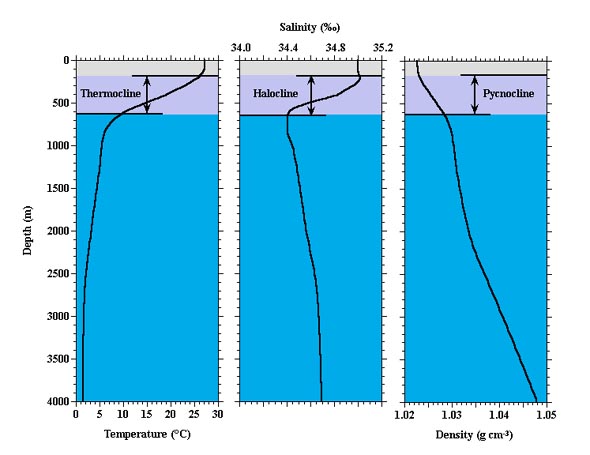Directions
In our diagram of a whale hunting for giant squid,
the temperature contour lines (light blue) are typical for the Atlantic
Ocean near the Bahamas.
This is one of the places where sperm whales might hunt for giant squid.
The whale surfaces for a big gulp of air in nice, warm, 26°C
(about 79°F) water. Squid live deep in the ocean where
the water (even in the tropics) is a
frigid 4°C (about 39°F).
The whale's hunting dive to 1500 meters takes about 30 minutes.
- For each of the given depths in the table:
-
Fill in the table by first locating the point along
the whale's path (dashed yellow line) which is at that depth.
-
Now estimate the temperature by looking at the values on the
closest light blue temperature contours.
-
Record the temperature for that depth in the table.
-
Plot the data from the table onto the temperature profile graph.
- Connect the dots on the temperature profile and you are done.
Congratulations!
-
Note: (1) Our whale will feel the temperature change much more quickly
at the beginning of the dive. (2) More than half of the dive is in
water colder than 10°C (50°F). BRRRRRRR.
|
